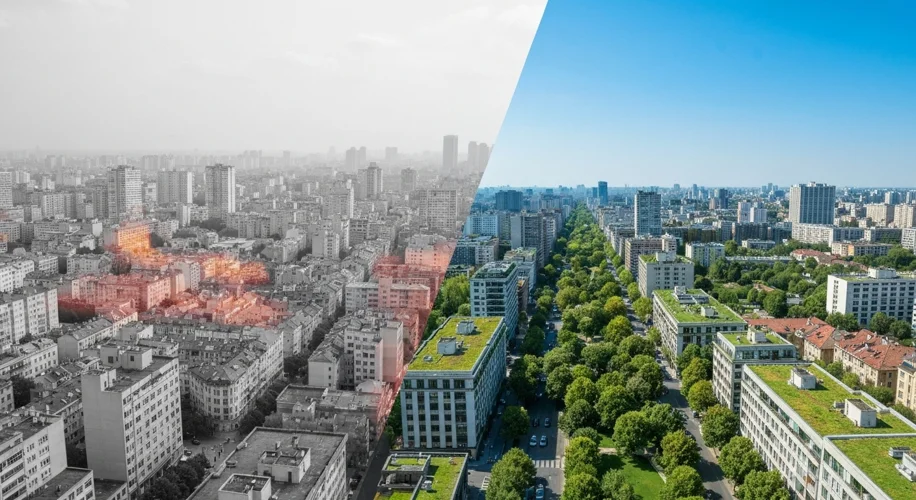Did you know that the city you live in can be significantly hotter than the surrounding rural areas? It’s not just your imagination; it’s a science called the Urban Heat Island (UHI) effect. As someone who’s spent years studying our atmosphere, I find this phenomenon fascinating, and frankly, a little concerning.
So, what exactly is an urban heat island?
Imagine your city as a giant heat sponge. That’s essentially what’s happening. Unlike rural landscapes that are covered with vegetation, cities are packed with materials like asphalt, concrete, and dark rooftops. These materials absorb and store more solar radiation than natural landscapes, then release that heat slowly back into the air. Think about how hot a black car seat gets on a sunny day – it’s similar, but on a much larger scale.
Beyond the building materials, there are other factors at play:
- Reduced Vegetation: Trees and green spaces provide shade and cool the air through a process called evapotranspiration (basically, plants sweating). When we pave over these areas for development, we lose this natural cooling.
- Urban Geometry: The tall buildings and narrow streets in many cities can trap heat, creating a canyon effect where heat is reflected between surfaces and has difficulty escaping.
- Waste Heat: All the energy we use in cities – from air conditioners and cars to industrial processes – generates heat that is released into the urban environment.
As a result, on a warm, clear night, the air temperature in a city center can be several degrees Fahrenheit (or even Celsius) higher than in nearby rural areas. This difference can be even more pronounced during heatwaves.
Why does this matter?
The impact of UHI isn’t just about feeling uncomfortable. It can have real consequences for city dwellers:
- Increased Energy Consumption: Higher temperatures mean more demand for air conditioning, leading to higher energy bills and increased greenhouse gas emissions.
- Health Impacts: Prolonged exposure to higher temperatures can exacerbate existing health conditions like heart and respiratory problems, and increase the risk of heatstroke, especially for vulnerable populations.
- Air and Water Quality: Higher temperatures can contribute to the formation of ground-level ozone, a pollutant that can harm health and vegetation. Runoff from hotter surfaces can also increase water temperatures in streams and rivers, impacting aquatic life.
But there’s good news! We can take steps to cool our cities.
Mitigation strategies focus on bringing more nature back into the urban fabric and rethinking how we build:
- Green Roofs: Planting vegetation on rooftops can significantly reduce heat absorption and provide insulation.
- Cool Pavements and Roofs: Using lighter-colored materials that reflect more sunlight instead of absorbing it can make a big difference.
- Urban Greening: Planting more trees, creating parks, and developing green spaces provide shade and cooling through evapotranspiration.
- Smart Urban Design: Incorporating design principles that allow for better air circulation and reduce heat trapping can help.
Understanding the urban heat island effect is crucial as our cities continue to grow and climate change brings more extreme heat events. By implementing thoughtful urban planning and design, we can make our cities more resilient, healthier, and comfortable for everyone. It’s about building smarter, greener cities for a cooler future.

